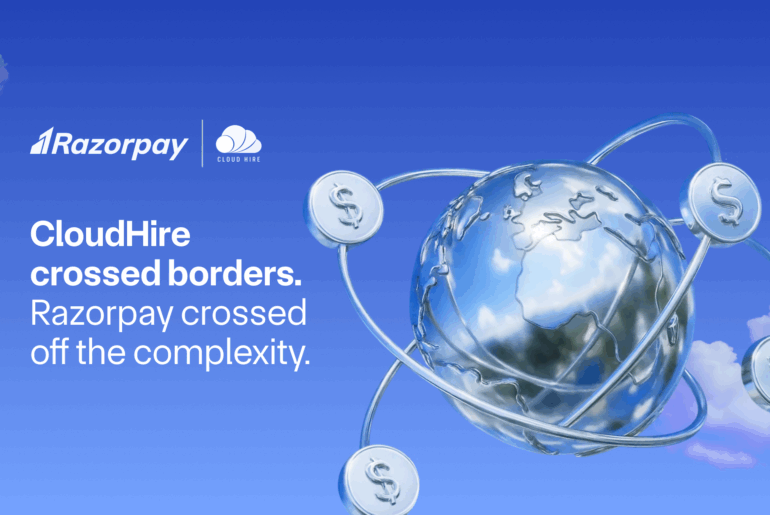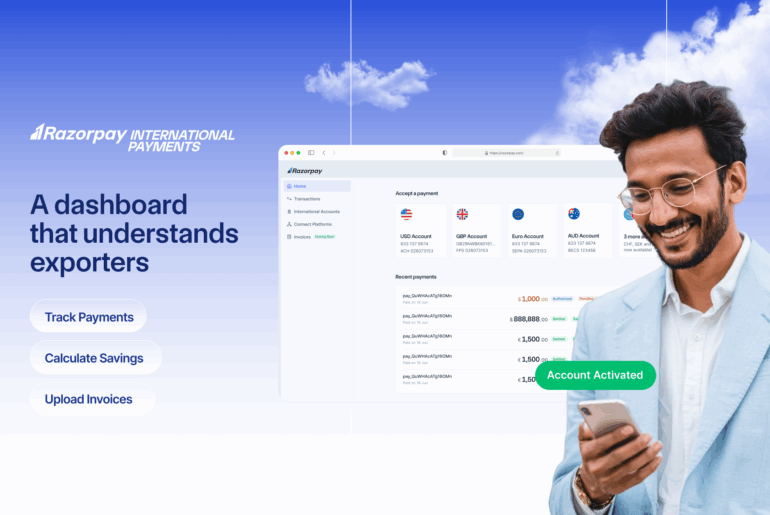If you receive US dollars or any foreign currency for your work as an Indian exporter or freelancer, you know the excitement of getting paid by a global client. But with that payment comes a crucial step: compliance. Navigating the Reserve Bank of India (RBI) guidelines is essential to ensure your hard-earned money lands in your account without any hitches.
India’s rules for inward remittance revolve around a few key players: the Foreign Exchange Management Act (FEMA), electronic Foreign Inward Remittance Advice (e-FIRA), purpose codes, and timely documentation. It might sound complex, but it doesn’t have to be.
This guide breaks down everything you need to know to ensure your international payments are smooth and compliant, letting you focus on what you do best—serving your global clients.
Key TakeawaysCompliance is Non-Negotiable: All inward remittances are governed by RBI and FEMA regulations to ensure transparency and prevent illegal activities. Purpose Codes are Crucial: Every payment needs a specific RBI purpose code (e.g., P0802 for software services) that accurately describes the nature of the transaction. A mismatch can lead to delays or rejection. Documentation is Your Proof: Keeping documents like invoices, contracts, and e-FIRAs is mandatory for audits and claiming export benefits. Timelines Matter: You must report and reconcile your foreign payments through your bank’s portal, usually within 14 days of receipt. |
What Is Inward Remittance & Why Does Compliance Matter?
At its core, inward remittance is simply money received in India from a foreign country. For a freelancer, it’s the payment for a project. For an exporter, it’s the revenue from selling goods abroad.
But why is the government so interested in these payments?
The RBI, through its FEMA guidelines, monitors this flow of foreign currency to safeguard India’s economy. Proper compliance ensures that all transactions are legitimate and transparent. For you, the exporter or service provider, this matters for three key reasons:
- It’s the Law: Adhering to FEMA rules and RBI thresholds is mandatory. Non-compliance can lead to penalties or legal issues.
- Unlocks Export Incentives: To claim benefits like GST refunds on exports, you need to provide proof of payment, primarily through documents like the e-FIRA.
- Smooth Audits: When your books are audited, having a clean, well-documented record of all foreign payments makes the process seamless.
The Key Regulatory Frameworks Explained
Let’s demystify the main regulations that govern your international payments.
- FEMA (Foreign Exchange Management Act, 1999): This is the master rulebook for all foreign exchange transactions in India. It empowers the RBI to lay down the operational guidelines.
- Purpose Codes: This is one of the most critical parts of the process. A purpose code is a unique identifier that tells the RBI why you received the money. Your bank will always ask for it before crediting the funds to your account.
- P0802: For software consulting and implementation services.
- P0811: For cross-border engineering services.
- P0102: For receiving payment against the export of goods.
- EDPMS (Export Data Processing and Monitoring System): This is a digital portal used by the RBI to monitor export transactions. When you receive a payment, your bank reports it on EDPMS. You then need to provide the necessary documents to “close” the entry, effectively matching the payment to the specific invoices you raised. This creates a transparent digital trail for every export transaction.
| Did You Know?
India is the world’s largest recipient of inward remittances, with inflows reaching a record $135.46 billion in the fiscal year 2024-25, up 14% from the previous year. These remittances account for over 10% of India’s gross current account inflows and help offset nearly half of the country’s $287 billion merchandise trade deficit. The Foreign Exchange Management Act (FEMA), introduced in 1999 to replace the stricter FERA, decriminalized foreign exchange violations, making it easier for freelancers and exporters to participate in the global economy. |
Required Documents for Inward Remittance Compliance
Being prepared with the right documents is half the battle won. Here’s a quick checklist of what you’ll typically need.
| Requirement | Description |
| Purpose Code Declaration | The correct RBI purpose code that matches the service or goods described in your invoice (e.g., P0802 for software). |
| Invoice / Contract Copy | A clear invoice or contract showing the foreign client’s details, services/goods provided, value, and currency. |
| e-FIRA (Electronic Foreign Inward Remittance Advice) | A digital certificate issued by your bank as conclusive proof that you have received a foreign payment. This has replaced the physical FIRC. |
| Bank Payment Advice | Proof of receipt from the bank, often in the form of a SWIFT message copy or a transaction reference number (UTR). |
| Exporter Identification | Your PAN, GSTIN (if applicable), and IEC (Importer-Exporter Code) for export of goods. |
| Form 15CA & 15CB | Required in specific cases, often for larger transactions or when tax treaty benefits are being claimed. Consult a Chartered Accountant for this. |
Timeline & Reporting: Don’t Miss the Deadlines
Compliance is not just about having the right documents; it’s also about submitting them on time.
-
Reporting:
You must report your inward remittances to your bank, which then uploads the details to the EDPMS portal. This should ideally be done within 14 days of receiving the funds.
-
Reconciliation:
After reporting, you must provide the supporting documents (like invoices) to reconcile and close the entry in the EDPMS.
-
Record Keeping:
As per FEMA guidelines, it’s crucial to maintain all records related to your international transactions for at least 5 years.
Common Compliance Mistakes to Avoid
Even with the best intentions, slip-ups can happen. Here are some common pitfalls to watch out for:
-
Incorrect or Missing Purpose Codes:
Using a generic code or one that doesn’t match your invoice can cause your payment to be flagged.
-
Delayed e-FIRA Collection:
Not getting the e-FIRA from your bank after the payment is processed. This document is vital for your records.
-
Value Mismatches:
Discrepancies between the amount on your invoice and the actual amount received (after bank fees, etc.) without proper explanation.
-
Ignoring Form 15CA/15CB:
Failing to file these forms when required for high-value transactions can lead to tax-related compliance issues.
Simplify Payment Compliance with Razorpay International
While your bank handles the final layer of compliance with EDPMS and purpose codes, the process of getting paid shouldn’t be a hassle. This is where a payment platform can streamline your experience.
Razorpay International helps you accept payments smoothly from clients in over 100 countries, with compliance built into the process.
Here’s how it helps:
- Accept in 100+ Currencies: Invoice your clients in their local currency and receive funds in INR, with purpose codes automatically tagged for easier processing.
- e-FIRA Ready Records: Get clear documentation for every transaction, making it simple to provide your bank with the information needed to issue an e-FIRA.
- Simplified Accounting: Easily access invoices, bank advice, and transaction histories in one dashboard, simplifying reconciliation.
- No Hassle of Foreign Accounts: Eliminate the need to maintain foreign bank accounts and manage forex risk.
Simplify International Payments with Razorpay
Power your global business the right way. Switch from personal remittances to a fully compliant, business-grade payment platform.
Conclusion
Receiving international payments is a mark of a successful global business. By understanding and following India’s inward remittance rules, you ensure that your business operates smoothly and securely. Timely compliance, correct documentation, and accurate purpose codes are the pillars of this process. And with modern tools and platforms, you can manage both your payments and your compliance obligations with confidence.
Frequently Asked Questions (FAQs)
-
What is inward remittance and who needs to comply?
Inward remittance is any payment received in India from a foreign country. All Indian residents, freelancers, and businesses receiving such payments must comply with RBI and FEMA guidelines.
-
When should I report inward remittance via EDPMS?
You should submit the required documents to your bank for reporting and reconciliation in EDPMS within 14 days of receiving the funds in your account.
-
What purpose code must I use for service exports?
The purpose code depends on the specific service. For example, P0802 is for software consulting, P0806 is for business and management consultancy, and P1007 is for marketing and public relations. Always choose the code that most accurately describes your service.
-
Do I need Form 15CA/15CB for small-value receipts?
Generally, Form 15CA/15CB is not required for personal remittances or small transactions. They are typically mandated for larger payments or specific types of income where tax implications need to be certified by a CA. It’s best to consult a professional if you’re unsure.
-
Is e-FIRA mandatory for every inward export payment?
Yes, an e-FIRA (or its physical predecessor, FIRC) is essential proof that you have legitimately received export-related funds through an authorized bank. It is mandatory for claiming export incentives and for your audit trail.


